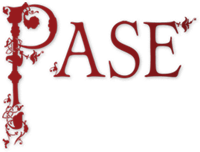Table of Contents
Top of page
Name
Summary
Distribution Map
Property List
Profile
Bibliography
Bottom of page
Erlewin 7
Erlewin father of Baldwin 13, fl. c.1036-c.1050
Male
DWP
4 of 5
Summary
The name Erlewin occurs twice in DB as the patronymic of a man called Baldwin TRE.Profile
The name Erlewin occurs twice in DB as the patronymic of a man called Baldwin TRE; and, given the rarity of both names in pre-Conquest England, it is reasonable to assume that the references are to the same individuals, Erlewin 7 and Baldwin 13. Nevertheless, we cannot assume that Erlewin ever held any of the lands held by Baldwin TRE. All we can really say on the basis of the DB evidence is that his son must have been born before c.1050 and thus that this represents Erlewin’s floreat.That having been said, however, there are good reasons to identify Erlewin 7 with the Hearleuuinus who was granted land at Lyppard in Worcestershire after accompanying the bishop, Beorhtheah 2, on an embassy to Germania in c.1036 (Lewis 1995: 134, 140-2; Hearne 1723: 2 267). If so, then Erlewin’s floreat can be extended to c.1036 and the current PASE identification of the recipient of the Lyppard grant as Herluin 1, a priest and tenant of Bishop Beorhtheah, must be abandoned.
Lewis (1995: 134) has also suggested that Erlewin 7 could be the same man (albeit now retired) as Erlewin 8, who was the co-holder (with Godwine) of an estate at Peasemore in west Berkshire TRE. The rarity of the name Erlewin and the proximity of Peasemore to Baldwin’s extensive TRE estates (the closest of which was at Hodcott, only 3 miles away) certainly render the suggestion possible; but these were not the only instances of the name Erlewin in pre-Conquest England and the presence of Erlewin 8’s co-holder Godwine complicates the interpretation. For these reasons Erlewin 7 and Erlewin 8 are best regarded as separate people.
Bibliography
Hearne 1723: Hemingi Chartularium Ecclesiae Wigorniensis, ed. T. Hearne, 2 vols. (Oxford, 1723)
Lewis 1995: C. P. Lewis, ‘The French in England before the Norman Conquest’, Anglo-Norman Studies 17 (1995)
